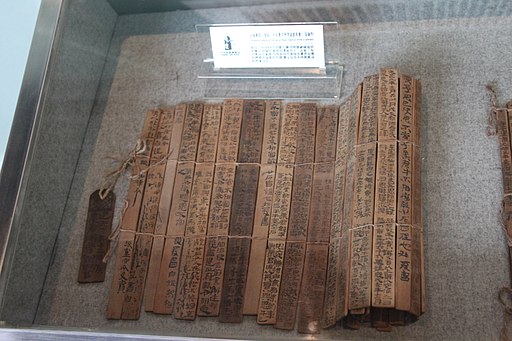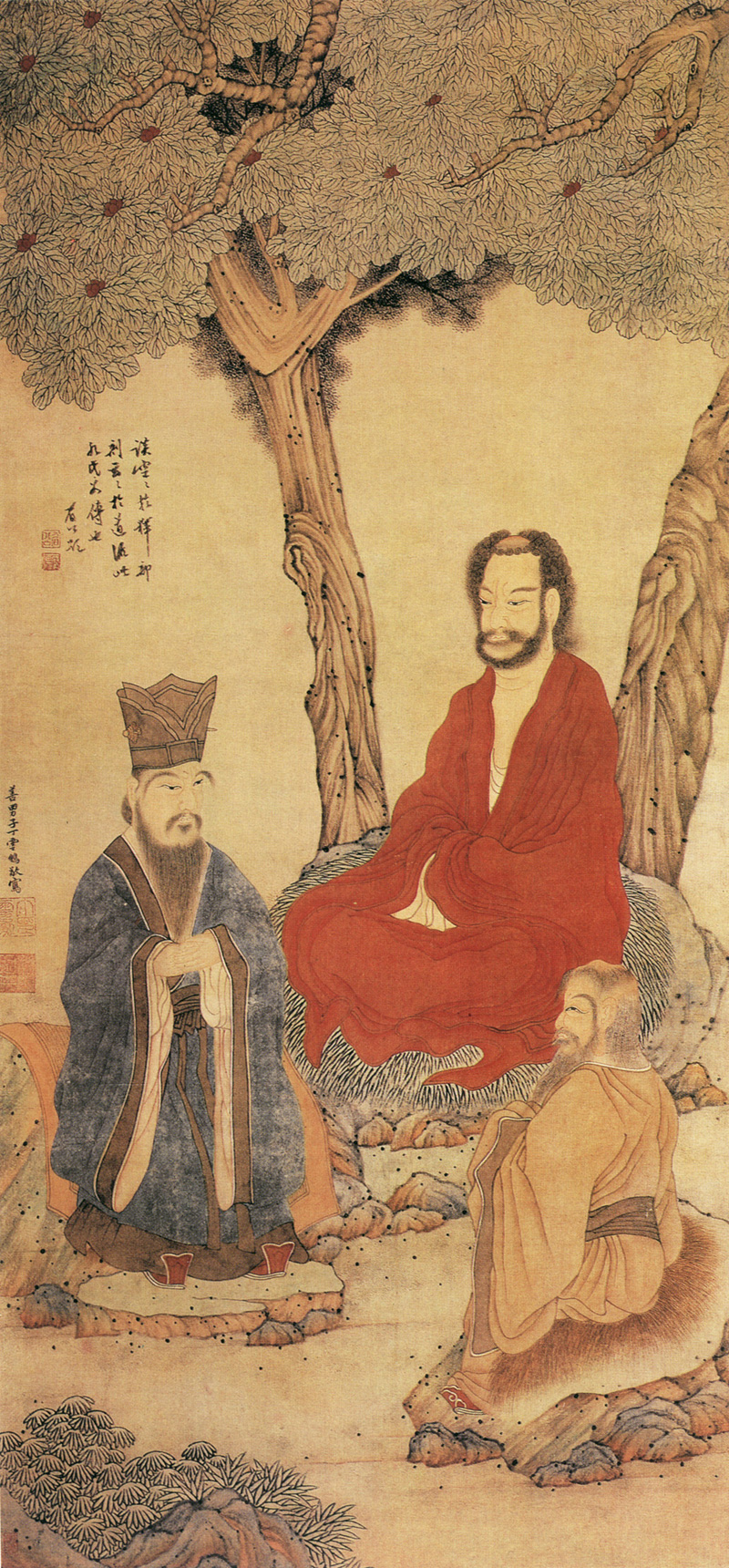Updated Fall 2022
with much gratitude to the Chinese Text Project
CONFUCIANISM
Confucius (Kongzi)
http://en.wikipedia.org/wiki/Confucius
UNESCO Sites: Temple, Mansion, Gravesite
http://www.youtube.com/watch?v=fbW2bN74V2w
“Four Books” of Confucianism
(1) Great Learning by Confucius: A mission statement for higher education. “Things have their root and their branches.”
http://classics.mit.edu/Confucius/learning.html
Time-lapse root video
https://www.youtube.com/watch?v=Y6vgAnMhGxs
Time-lapse tree animation
https://www.youtube.com/watch?v=y5Ob2o7Rnao

(2) Analects of Confucius: A great bundle of teachings.
https://ctext.org/analects
Suggested Passages
1.1 “Is it not pleasant”
2.1 North Star
2.3 Autobiography
3.3 Humanity
4.5 Virtue
6.30 Others
12.22 Constancy
17.6 Five Things
12.17 / 13.3 / 13.13 Rectify Names
17.8 Dialectical Unity of Opposites in Education (see Xiaoxia Chen below)
Suggested search terms: superior man, cultivation (cultivat*), virtue, rectify (rectif*), right [PS: in my opinion, ‘superior man’ should be translated as ‘cultivated person’]
(3) Doctrine of the Mean by Tsze-sze, Grandson of Confucius
http://nothingistic.org/library/confucius/mean/
a.k.a. Zhong Yong
http://ctext.org/liji/zhong-yong
Mencius (Mengzi)
Background
http://en.wikipedia.org/wiki/Mencius
(4) The Mencius
http://nothingistic.org/library/mencius/
Search term: passion-nature
http://ctext.org/mengzi
Xunxi (vs. Mencius on Human Nature) [pdf]
http://afe.easia.columbia.edu/ps/cup/xunzi_human_nature.pdf
21st Century Confucianism: With an Emphasis on Resources for Climate Justice
Boyung Lee: “A Confucian Perspective on Western Notions About Globalization” (undated @ 2004; appeals to “Mencian Confucianism;” check library databases for more work by this Christian-Confucian Theologian)
Can Confucianism Save the World?
https://www.youtube.com/watch?v=PFxAJlY9ZTo
Confucian Statement on the Protection of the Planet
http://www.arcworld.org/downloads/Confucian-Statement-on-Ecology.pdf
Secondary Literature
Chen, Xiaoxia. “Harmonizing Ecological Sustainability and Higher Education Development: Wisdom from Chinese Ancient Education Philosophy.” Educational Philosophy & Theory, vol. 51, no. 11, Oct. 2019, pp. 1080–1090. EBSCOhost, doi:10.1080/00131857.2018.1501677.
–With special attention to Xue Ji, “the earliest treatise on education and teaching in ancient China, even in the world, generalizes the social function of education into two interrelated aspects: cultivating the talents needed by the country and shaping positive social morality.” Find Xue Ji under Confucian LiJi at the Chinese Text Project: https://ctext.org/liji/xue-ji
Christensen, Jan Erik. “Building an Environmental Ethics from the Confucian Concepts of Zhengming and Datong.” Asian Philosophy, vol. 24, no. 3, Aug. 2014, pp. 279–293. EBSCOhost, doi:10.1080/09552367.2014.960297. [Zhengming: Rectification of Names; Datong: Great Harmony]
DAOISM
Recall Confucius and the Rectification of Names (Analects 13.3)
Laozi
http://en.wikipedia.org/wiki/Laozi
Dao de Ching
http://ctext.org/dao-de-jing
38. “propriety is the attenuated form”
Zhuangzi
http://ctext.org/zhuangzi
30 Minute Interactive
https://www.youtube.com/watch?v=8TSEnoAa39s
21st Century Daoism
Daoist Faith Statement on Conservation
https://interfaithsustain.com/daoist-faith-statement-on-the-environment/
NEO-CONFUCIANISM
Zhou Dunyi
http://en.wikipedia.org/wiki/Zhou_Dunyi
Diagram of the Supreme Polarity
http://www2.kenyon.edu/Depts/Religion/Fac/Adler/Writings/Chou.htm
Wikipedia’s explanation (not primary source)
https://en.wikipedia.org/wiki/Taijitu
Tongshu
http://www2.kenyon.edu/Depts/Religion/Fac/Adler/Writings/Tongshu.htm
Afterword: Hindu Self and Buddhist No-self
From the library databases. Translation of a medieval Taoist text written by a woman:
WANG, ROBIN R. “Kundao 坤道: A Lived Body In Female Daoism.” Journal Of Chinese Philosophy 36.2 (2009): 277-292. Religion and Philosophy Collection. Web. 17 Aug. 2013.
I Ching
An ancient system of meaning built from two symbols: a broken line (yin) and a solid line (yang).
Wilhelm and Baynes Translation
http://www.pantherwebworks.com/I_Ching/
Chinese Text Project
YiJing Hexagram Sequences
http://www.biroco.com/yijing/sequence.htm
Yi-globe
http://www.i-ching.hu/chp00/chp2/reconstruct.htm
I Ching Online
http://www.ichingonline.net/index.php
Expanding the circle: Further readings
Database: Zhang, Shi-Ying. “Philosophy And Aesthetic: To Begin With The Case Of Western Postmodern Art.” Open Journal Of Philosophy 2.2 (2012): 136-142. Philosopher’s Index. Web. 24 Aug. 2014.
From the Abstract: “Since the middle of the last century, under the influence of traditional Western philosophy, Chinese philosophy lost its traditional beauty. To keep this beauty, we need to go further and understand philosophy as a discipline to upgrade the realm of life. The beauty of life realm comes before the beauty of philosophy. Therefore, Chinese philosophy needs to become life-oriented like postmodern art. Inheriting and developing Daoism philosophy while absorbing the philosophy of life shown through postmodern art, seems to be a good way for us to enhance the realm of life and pursue the beauty of philosophy.”
From the article: “Confucianism makes moral realm the highest realm of life. It also advocates “heaven-man unity”, but its “heaven” is moral to a great extent. Despite all that, its “heaven-man unity” remains to be poetic, for it tries, through a poetic and aesthetic consciousness, to turn a moralized “heavenly principle” into a spontaneous pursuit of the mind. By contrast, Daoism clearly regards aesthetic realm the highest realm of life, and its philosophy features the beauty of philosophy.” (140)
*credit for some selections from The Analects goes to:
Wong, David B. “Early Confucian Philosophy and the Development of Compassion.” Dao, vol. 14, no. 2, June 2015, pp. 157–94, doi:10.1007/s11712-015-9438-x.
